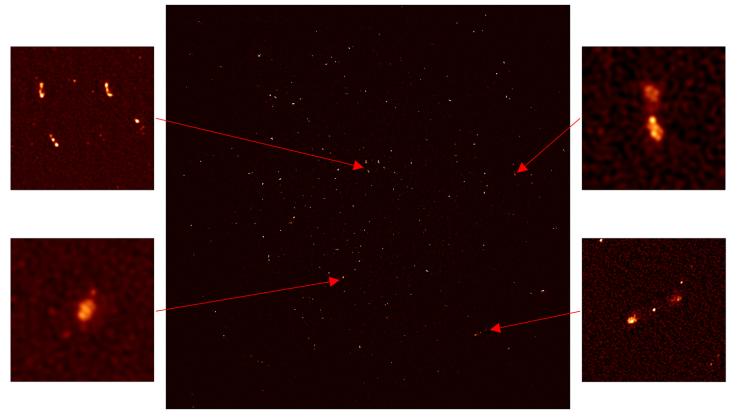South Africa’s MeerKAT Telescope Snaps Its First Image, Revealing Distant Galaxies And Black Holes

On Saturday, South Africa’s powerful MeerKAT radio telescope, which is still under construction, gave a taste of things to come when it released its “first-light” image showing, in unprecedented detail, a patch of sky covering less than 0.01 percent of the entire celestial sphere. The image revealed 1,300 galaxies in this tiny corner of the universe where just 70 had been seen before.
The image released Saturday is the first from MeerKAT — a precursor to the multi-nation Square Kilometre Array (SKA) project that is scheduled to become fully operational in the 2020s. Currently, only 16 of MeerKAT’s full contingent of 64 dishes are scanning the skies, and the rest are expected to be in place by late 2017.

“Based on the results being shown today, we are confident that after all 64 dishes are in place, MeerKAT will be the world's leading telescope of its kind until the advent of SKA,” Justin Jonas, chief technologist at SKA South Africa, said in a statement.
Over 20 countries are members of the SKA project, which, as is evident from its name, seeks to have a total collecting area of one square kilometre. This would be achieved through an array of 3,000 dishes spread across several countries. Once operational, it would become the largest and most sensitive radio telescope in the world, helping scientists explore distant galaxies and black holes, thereby furthering our understanding of, among other things, dark energy and the origin of the universe.
MeerKAT, which is being built in the remote and arid Karoo region of South Africa, will function as one of the main clusters of the SKA. Australia will be the other one.
“Through MeerKAT, South Africa is playing a key role in the design and development of technology for the SKA,” Rob Adam, Project Director of SKA South Africa, said in the statement. “The South African team of more than 200 young scientists, engineers and technicians, in collaboration with industry, local and foreign universities and institutions, has developed the technologies and systems for MeerKAT. These include cutting edge telescope antennas and receivers, signal processing, timing, telescope management, computing and data storage systems, and algorithms for data processing."
© Copyright IBTimes 2024. All rights reserved.






















